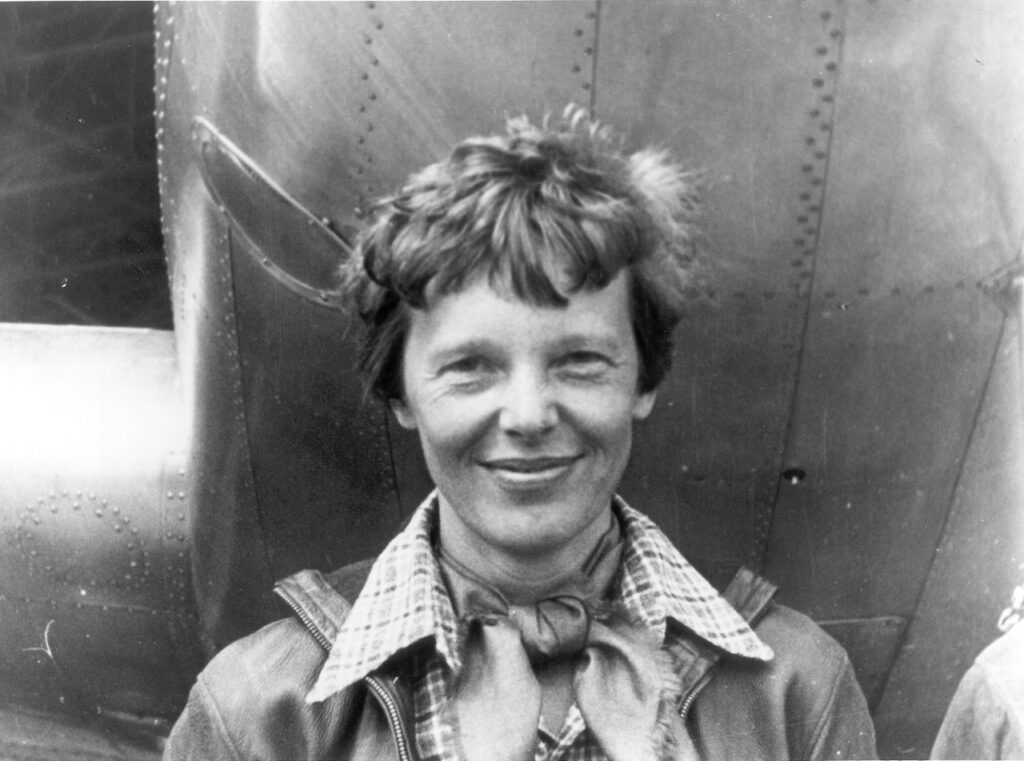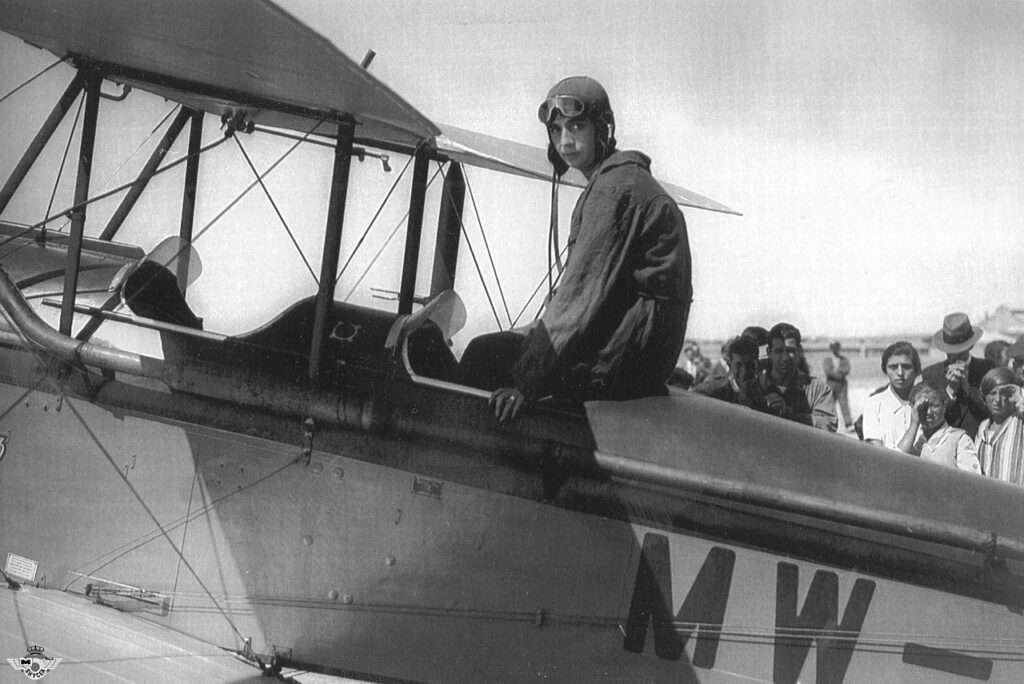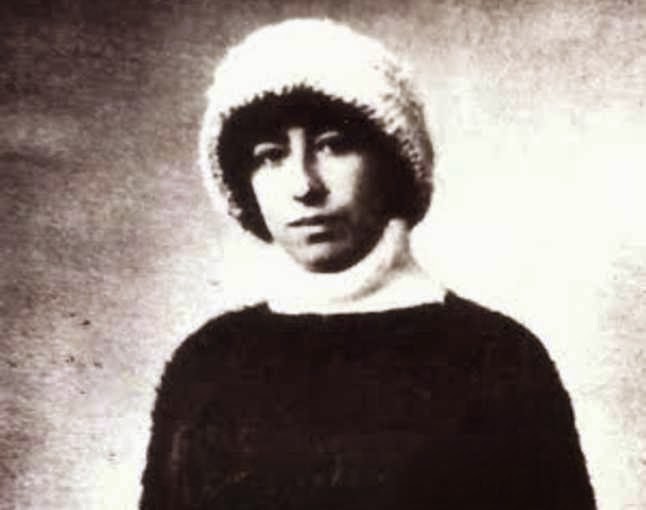As with many other occupatings, there was a time when only men were in the cockpit. Even today, after more than a hundred years of aeronautical history, female pilots continue to be a minority –estimated at around a mere 3 percent. Fortunately, in recent years more and more women have been signing up for pilot training, in Spain and around the world. For all of them, here´s a look at some of their most illustrious forebears, who broke the “glass ceiling” of the wild blue yonder.

Amelia Earhart, the World´s Most Famous ´Aviatrix´
Born in 1897 in the U.S. state of Kansas, this towering figure began racking up flying experience in the 1920s, and in 1928 became something of a celebrity in the USA as the first passenger to cross the Atlantic Ocean by plane, one of the great milestones of aviation. A scant four years later, she became known worldwide for becoming the first woman to fly across the ocean solo. Her mystique was cemented for all time in 1937 when in attempting to also become the first female to circumnavigate the entire globe, she and her navigator disappeared over the Pacific Ocean.

María Bernaldo de Quirós, the First Spanish Woman to Officially Become a Pilot
Although Mari Pepa Colomer (see below) is often considered the forerunner of all of Spain´s female pilots, this daughter of the Asturian Marquis de los Altares, born in 1898, became the country´s first to obtain the official title. After two marriages (she was widowed from her first husband and separated from her second), Bernanldo de Quiros´ interest in aviation took hold after after a forced landing of three planes in 1928 because of mechanical difficulty. In that year she also undertook her first solo flight and granted a pilot´s licence – although she was also denied the title of “honorary military pilot” by the founder of the Spanish air force, General Alfredo Kindelán, on the grounds that she was a woman. Still, a momentous year for her, and for our country´s aviation history! And in honour of her many achievements, we baptised one of our new Airbus A320neos in her name.
Mari Pepa Colomer, Span´s First Female Flight Instructor
Three years later, in 1931, a Barcelona-born 17-year-old (full name Maria Josep Colomer i Luque), became the third Spanish woman (and the first from Catalonia) to receive her licence. Her passion for flying went back to age seven, when she would go
she was just a small child, biking to a local aerodrome to climb into the airplanes – always under the supervision of the ground staff. At age seven, she reportedly tried “flying” by jumping from the second floor of her family home whilst holding only an umbrella (broke both legs on that one).
Colomer participated in a few amateur pilot competitions and in 1935 made history as Spain´s first female flight instructor. During the Spanish Civil War which broke out the following year, she acted as a flight instructor and performed other functions such as ambulance and logistics work on the loyalist Republican side. Going into exile in France and then the United Kingdom after her side lost the war, she passed away in London in 2004 at the ripe age of 91.

Elisa ‘Chichana’ Patiño: The First Galician Woman to Pilot an Aircraft
Born in Pontevedra in 1890, the daughter of the Duke and Dutchess of Patiño in school excelled in various arts such as music and painting, but this unconventional woman´s passions were far removed those of most women of her day – including flying, which she started doing in 1913 including her first solo flight. She never managed to receive her pilot´s licence, despite having racked up more than the 50 hours of required flight time and in fact died during the global influenza epidemic of 1918 – but “Chicana” sill made aviation history.

Lolita Vives, Mari Pepa Colomer´s Outstanding Student
Another unconventional Catalan woman, Dolors Vives Roldón (better known as Lolita Vives) was a piano teacher who in 1933 at the age of 25 was enrolled by her dad in an outfit called the Popular Air Club of Barcelona, which until then had been reserved for the military. By the following year Vives had completed her first solo flight and received her pilot´s licence. But beyond her family, the other great influence in her life was Mari Pepa Colomer, who upon the outbreak of the civil war was her instructor in the school of military avation set up by the government of Catalonia. Colomer was highly impressed by her flying, and they became fast friends until Colomer´s death in 2004; Vives followed her in 2007, at the age of 98.
Other Notable Achievements of Female Pilots
As with aviation in general, those first dcades of the 20th century saw great advances when it came to “those daring young women in their flying machines” (even though progress subsequently end up stagnating somewhat until more recently). Other outstanding fearless flying females of the era include:
Elise Raymonds de Laroche – She was Parisian who is considered to be the world´s first woman to pilot a plane, in 1909, and that same year became the first to earn a pilot´s licence. After setting women´s flying records in both altitude and distance, de Laroche was killed in a 1919 crash of an experimental aircraft.
Bessie Raiche – This dentist/physician and Wisconsin native in 1910 became the first woman in the USA to pilot an aircraft, and among other things built and flew her own biplane, as well as with her husband innovating the use of lighter materials such as bamboo and silk to construct airplanes.
Bessie Coleman – Born in 1892 to sharecroppers in Texas, the first known black person to earn a pilot´s license, in 1921, had to travel to France in order to get it, because at the time neither black people nor women were allowed to study aviation.
Ruth Law Oliver – Turned down as a student by no less than Orville Wright, this Massachuetts-born aviatrix made headlines in the 1910s with feats such as the first cross-country flight, the firsts night flight by a women, and others. Her 1917 magazine article “Let Women Fly!” was motivated by the US military’s refusal to allow women to become pilots in World War I and served as an inspiration to future generations.
Images: Jvicente22; Flavia bq;

